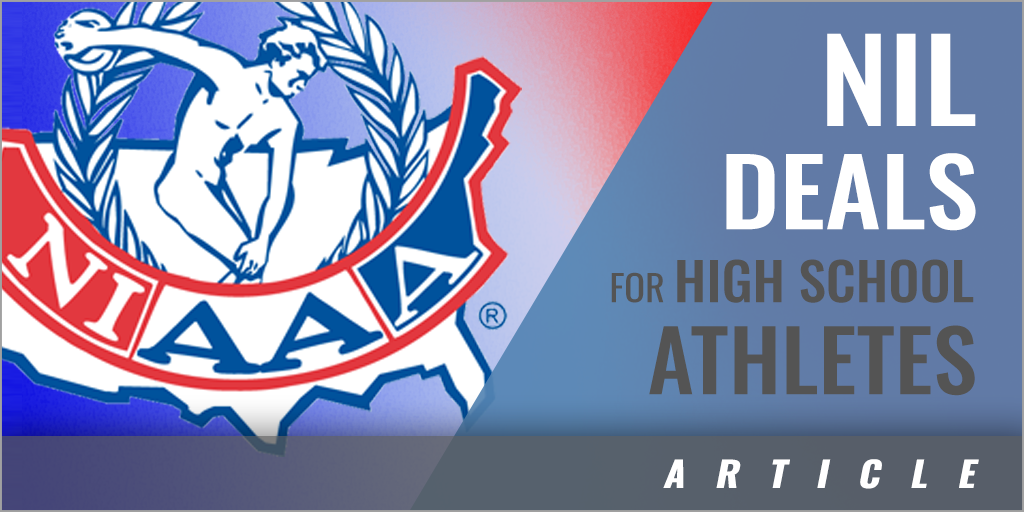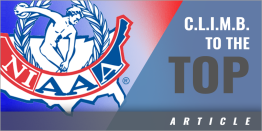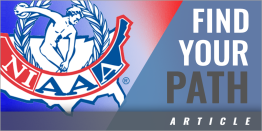|
By: Josh Scott, CMAA - Springfield Public Schools (MO) and Ryan Miller, CMAA - Scotch Plains-Fanwood High School (NJ) The rules that govern collegiate and professional sports differ from the rules that govern high school athletics is a solid foundation for high school athletic directors. This foundation was shaken in 2021 when the NCAA vs. Alston decision permitted collegiate athletes to be compensated for the intellectual property of their individual name, image, and likeness. The high school definition of amateurism was questioned and then quickly aligned with the NCAA and collegiate athletics. NIL compensation for high school athletes does represent a seismic shift and altered the foundation of amateur scholastic athletic philosophy and does not have consistency across state associations. While there continue to be many challenges facing athletic administrators, NIL has become a focal point nationally. Alignment for approving NIL for interscholastic athletes is not present, there appears to be inconsistency regarding approved policies. In most cases, school administration and coaches are not permitted to appear, promote, or assist the athlete while engaging with an NIL contract. Additionally, use of the school’s name, colors, and logos are prohibited as well as adult entertainment, alcohol, tobacco, cannabis, controlled substances, prescription pharmaceuticals, casinos, gambling, and weapons. Interscholastic athletes are permitted to have an agent, use any media, start their own business, and organize and run camps, clinics, and lessons. Why does this matter? The National Interscholastic Athletic Administrators Association (NIAAA) has always promoted an education-based athletics philosophy. In short, schools promote and support athletics as an extension of the classroom to provide student athletes with a platform to compete for their school while learning valuable life lessons. While NIL compensation can keep high school athletes in their communities, bring positive attention to the school, and be a financial benefit for the athlete and family, there are some concerns. For example, there is evidence of athletes relocating regionally if not to another state that has approved NIL compensation and an alteration of the concept of amateur athletes. Coupled with the concerns of family relocation and amateurism is the potential for reinforcement of the "me first" mentality and further erosion of the multi-sport athlete. Current teens are a part of Generation Z, or Gen Z, which has been heavily individualized by technological influences and the presence of social media. An aspect that has pervaded through Gen Z is a "me above we" mentality that could be expanded by high school athletes seeking profits from NIL deals. Additionally, athletes may forgo participating in multiple sports per year to ensure that their skills are best positioned for NIL compensation. An additional concern is that families with the means as well as high performing schools may attract more for the student; in short, the rich continue to get richer. What could be next? In approved states, athletic administrators are not permitted to be involved with NIL deals. However, athletes are. Therefore, whether an athletic administrator agrees or disagrees with the philosophy and ethics of NIL deals, there may be athletes who sign deals. These student athletes and their families will need to be informed of the state association rules. Moreover, many will need education about Federal Trade Commission rules and regulations, contract law, limited liability corporations, insurance, banking, etc. The process to educate the families may fall on the coach and athletic administrator, although many of us are not prepared. Currently, NIL has an athletic focus; however, athletes are not the only entities in a school that derive value from their intellectual property. Consideration for NIL deals may extend into all areas of extracurricular activities. For example, theater, chorus, band, cheer, DECA, Chess Club, and more may have individuals who can be remunerated for their talents. These students may have amateurism concerns that could extend into the regulations and policies governing those activities and or entrance into college. Conclusion The reality of high school athletes earning money from their NIL is growing at an explosive rate. The NFHS has created a free module to assist administrators, parents, and athletes. The course can be found on the NFHS website here. Websites have been created to track NIL deal values and educational entrepreneurs are creating websites and speaking tours to assist parents, athletes, and administrators. NCAA and State approved NIL deals are in their infancy; however, the impact upon interscholastic high school athletics has been swift and profound. |







